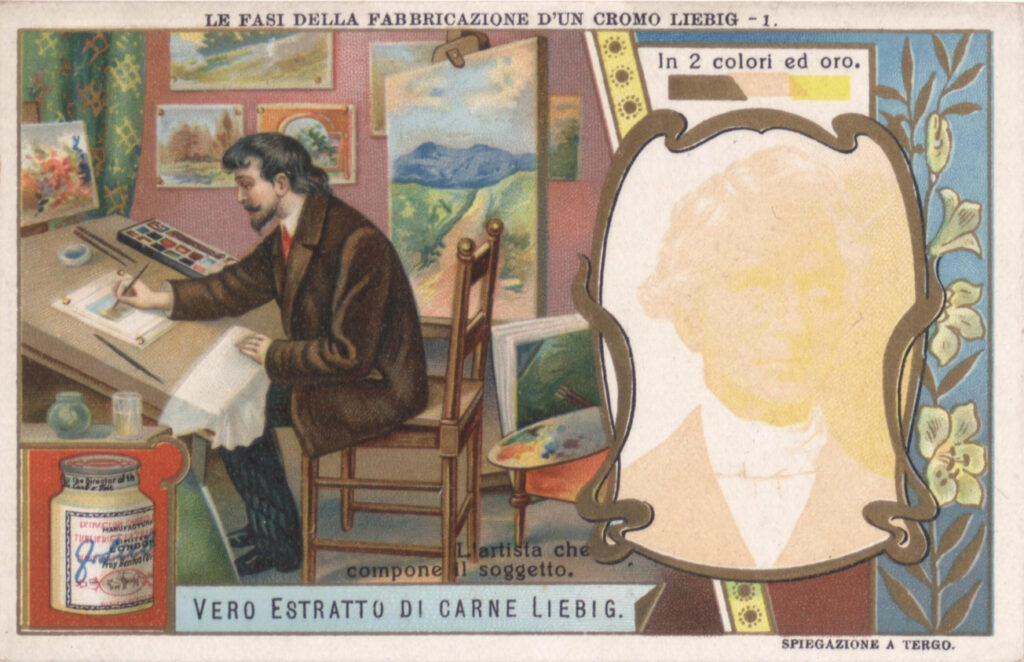Chromolithography
Chromolithography was a popular technique in the 19th century for reproducing colored prints. The origin of the technique lies in the discovery of stone printing or lithography by Aloys Senefelder in Munich in 1798. According to the legend, Senefelder wrote down an order for his ironer on a limestone when he had no paper to hand. This is how he discovered lithography. Senefelder refined the technique and it has remained largely the same ever since.
The process of producing a chromolithograph is quite complex. First, the limestone is polished with fine pumice and then further worked with moist sand until a perfectly smooth surface is created. The lithographer then uses a special bold chalk or pencil to draw the drawing in mirror image on the stone.
The drawing itself is applied to the lithographic stone or plate without shadows or highlights. The stone is then covered with a solution of gum arabic and nitric acid. This treatment etches the unsigned areas and creates soluble calcium nitrate. The stones are then washed, with the etched parts absorbing water, while the parts drawn with fat chalk remain impermeable. Now an ink roller can be run over the stone. The fat parts absorb ink, while the wet parts repel the ink. In this way, the stone is ready for printing.
To make multi-color prints, the process is repeated with different stones, with each stone representing a different color. Nowadays, the drawing can also be transferred photomechanically to a light-sensitive stone, which is known as photolithography. In a further development, the stone could be replaced by a metal plate of zinc or aluminum.
Chromolithography offered the ability to produce colorful and detailed images and was widely used for printing prints, book illustrations, advertising materials and postcards. It became a popular and widespread technique in the 19th century and early 20th century, but later lost popularity with the advent of modern printing techniques. Nevertheless, it remains an important part of graphic history and is still appreciated for its artistic value and historical importance.


